
B.C.'s Books: Philosophy and Religion
Eastern Philosophy

Hoff, Benjamin, The Tao of Pooh, Penguin Books, New York, 1982.
ISBN 0-14-00.6747-7
An utterly fantastic book that explains the concepts of the Taoist philosophy using examples from Winnie the Pooh. I love the sort of "don't worry, be happy" attitude of Taoism, and I still try to maintain that outlook to this day.
"What's that?" the Unbeliever asked.
"Wisdom from a Western Taoist," I said.
"It sounds like something from Winnie-the-Pooh," he said.
"It is," I said.
"That's not about Taoism," he said.
"Oh, yes it is," I said.
"No, it's not," he said.
"What do you think it's about?" I said.
"It's about this dumpy little bear that wanders around asking silly questions, making up songs, and going through all kinds of adventures, without ever accumulating any amount of intellectual knowledge or losing his simpleminded sort of happiness. That's what it's about," he said.
"Same thing," I said.

Ursula K. LeGuin. Lao Tsu. Tao Te Ching:
A Book About the Way and the Power of the
Way. Boston: Shambhala, 1998.
ISBN 1-57062-395-3
My favourite translation of the Tao Te Ching -- one of the two main texts that form the basis of Taoism.
28. Turning Back
Knowing man
and staying woman,
be the riverbed of the world.
Being the world's riverbed
of eternal unfailing power
is to go back again to be newborn.
Paul Reps, ed. Zen Flesh, Zen Bones: A Collection of Zen and Pre-Zen Writings, Doubleday, New York, 1961.
ISBN 0-385-08130-8
This book contains translation of four major Zen works which include parables, koans, and other items of interest in the Zen philosophy.
"Our schoolmaster used to take a nap every afternoon," related a disciple of Soyen Shaku. "We children asked him why he did it, and he told us: 'I go to dreamland to meet the old sages just as Confucious did.' When Confucious slept, he would dream of ancient sages and later tell his followers about them.
"It was extremely hot one day so some of us took a nap. Our schoolmaster scolded us. 'We went to dreamland to meet the ancient sages the same as Confucious did,' we explained. 'What was the message from those sages?' our schoolmaster demanded. One of us replied: 'We went to dreamland and met the sages and asked them if our schoolmaster came there every afternoon, but they said they had never seen any such fellow.'"
Chogyam Trungpa, Shambhala: The Sacred Path of the Warrior, Shambhala Publications, Inc., Massachusetts, 1984.
ISBN 0-87773-264-7
This book wasn't really my cup of tea. When I first read it, I had concluded that Taoism was My Way, and I wasn't really receptive to a new philosophy. Perhaps I should go back and read it again...
Richard Bach

Richard Bach is one of my greatest gurus, ranking even above John Lennon.
Richard Bach, Illusions: The Adventures of a Reluctant Messiah, Dell Publishing, New York, 1977.
ISBN 0-440-20488-7
Easily the best Richard Bach book ever written, Illusions provides all the information you need to know in order to become a messiah, how to work miracles, and how to really be happy.
And hearing, the Master was glad, and gave thanks, and came down from the hilltop humming a little mechanic's song. And when the throng pressed him with its woes, beseeshing him to heal for it and learn for it and feed it nonstop from his understanding and to entertain it with his wonders, he smiled upon the multitude and said pleasantly unto them, "I quit."
Richard Bach, One
The main premise of One is that all people are manifestations of the same spirit, each of which makes different choices and thus lead different lives. I leant it to someone I was staying with when I was in Australia in 1990, and I don't ever expect to get it back. Oh, well. Bach is too good to keep to yourself.
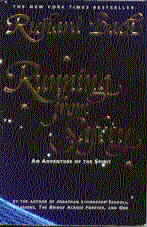
Richard Bach. Running From Safety: An Adventure of the Spirit, Delta Publishing, New York, 1994.
ISBN 0-385-31528-7
This book spells out more of the details of Bach's theory of the universe than other books. In it, Richard meets the kid he was many years ago, and figures out how to tell himself what he most needed to learn for himself.
Any umbrologists here? I thought of asking.
Umbrologists?
A physician who treats disorders of the shadow, I would have said: broken shadows, deformed shadows, missing shadows, hyperumbria -- abnormal activity of the shadow. You know, umbrologist! Any umbrologists here?
That's insane, they would have laughed. Whatever body does, shadow imitates.
Likewise is it insane, I would have said, to forget that whatever belief does, body imitates?
Paganism
Margot Adler. Drawing Down the Moon. Massachusetts: Beacon Press, 1986.
ISBN 0-8070-3253

Gerald Gardner. Witchcraft Today. New York: Magickal Childe Publishing, Inc., 1954.
ISBN 0-930708-03-5
This is the first book ever published by a self-proclaimed witch about the meaning and rituals of the Craft, and because of Gardner's "going public", interest in the neo-pagan movement exploded. Today, some commentators on the neo-pagan movement (eg. Isaac Bonewits) suggest that neo-paganism is the fastest-growing religious movement in North America.
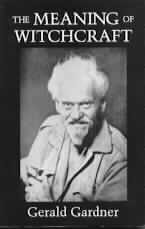
Gerald Gardner. The Meaning of Witchcraft. New York: Magickal Childe Publishing, Inc. 1959.
Lynn Meskell. "Goddesses, Gimbutas and 'New Age' Archaeology", Antiquity. Issue # 69, March 1995
This essay was recommended to me by a friend who's a Ph.D student in archaeology. This essay tries to keep in perspective the idea that although neo-pagans are trying to revive ancient religious traditions, the body of available evidence of those traditions is very slim.
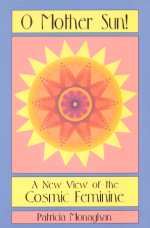
Patricia Monaghan. O Mother Sun!: A New View of the Cosmic Feminine. Freedom: The Crossing Press, 1994.
ISBN 0-89594-722-6
Many, many people assume that there's a cross-cultural association of the sun with masculinity (with associated crap about the active principle, etc.). This book finds several examples of cultures in which the sun is clearly worshipped as a goddess.
Women are not as men are, radiant beings connected to the intellect, to reason and to thought. While we stew in our fleshy juices, "the masculine" shines forth in heavenly splendor. If femininity is the moon, masculinity is the sun. In incarnate form -- as human men -- this force is responsible for everything that distinguishes us from mere animality. It is art, it is culture, it is language and philosophy.
Implausible as it seems, this is the message our culture conveys. The alleged inferiority of women is mythically based in our presumed connection to that realm of world, flesh and devil, whil men's alleged superiority is based on their supposed freedom from such connection. The solar hero is hailed as the savior of the race; the moon-woman is a lunatic, a witch, a sexual temptress, a danger.
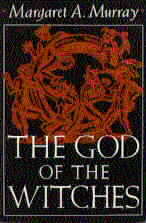
Margaret Murray. The God of the Witches. London, Oxford and New York: Oxford University Press, 1931.
ISBN 0-19-501270-4
A friend of mine, a Ph.D student in archaeology and physical anthropology, refers to Murray as "the bane of modern archaeologists." Nonetheless, this material was hugely influential on modern paganism, even though its historical credulity is no longer accepted.

Rachel Pollack. The Body of the Goddess: Sacred Wisdom in
Myth, Landscape and Culture. Shaftesbury: Element Books Limited, 1997.
ISBN 1-85230-871-0

Jeffrey B. Russell. A History of Witchcraft: Sorcerers, Heretics
and Pagans.
London: Thames and Hudson, Ltd., 1980.
ISBN 0-500-27242-5
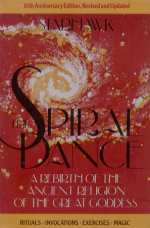
Starhawk. The Spiral Dance: A Rebirth of the Ancient
Religion of the Great Goddess. New York: Harper & Row, Publishers,
Inc., 1979.
ISBN 0-06-250814-8
One of the oval texts on the modern Goddess religions. Following is my favourite passage from the book:
In Venice, Z. Budapest, a hereditary Witch from Hungary, began teaching and training many women in a feminist tradition of Wicca. I met her one day close to the Spring Equinox, in her shop on a busy street, and she invited me to the first large all-women's ritual I attended. We walked to a beautiful hillside on the Santa Monica mountains, chanted, danced, and poured libations to the Goddess. I asked for healing for a friend who was going through an intense emotional crisis, and Z. looked me in the eye and said, "Ask for something for yourself." "No," I thought, "that's bad, selfish, and besides, I don't have any needs," but she was, wisely adamant. "In our tradition, it's good to have needs and desires," she said. "We are not a religion of self-abnegation."
I can't recall exactly what I asked for (which tells me how reluctant I was to own my own needs), but the ritual began a process of change and transformation, working in the way magic often does: by making everything fall apart.
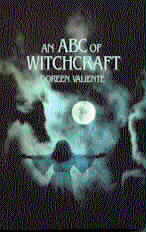
Doreen Valiente. An ABC of Witchcraft. Custer: Phoenix Publishing Inc., 1973.
ISBN 0-919345-77-8
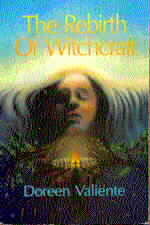
Doreen Valiente. The Rebirth of Witchcraft. Custer: Phoenix Publishing Inc., 1989.
ISBN 0-919345-39-5
A really compelling retrospective about the origins of the modern neo-pagan movement, by one of the people who worked closely with Gerald Gardner at the beginning of Wicca's "delurking" to the public.
Mysticism
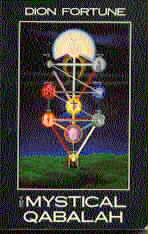
Dion Fortune. The Mystical Qabalah. Olathe: Samuel Weiser, Inc., 1935.
ISBN 0-87728-596-9
Entheogens
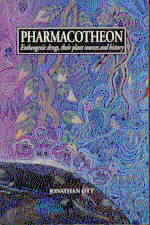
Jonathan Ott. Pharmacotheon: Entheogenic Drugs, Their Plant Sources and History. Kennewick: Natural Products Co., 1993.
ISBN 0-9614234-3-9
An fantastic multi-disciplinary book about enthoegenic drugs. Ott's excellent Proemium, in which he condemns the American "War on Drugs", is available on the web. Why is this book in my "Philosphy" section? Ott passionately believes in the religious experience of enthoegens.
According to a recent economic analysis of drug prohibition in the U.S., in 1987 American drug enforcement costs amounted to at least $10 billion [...].
If, instead of ceding control of the drug market to criminals who thereby become rich and powerful, the government were to legalize these drugs, the $10 billion loss could be converted into $10 billion in new taxes which could be used for drug eradication and treatment, along with $10 billion saved by not criminalizing 10 or 15% of the U.S. population. Note that this policy change would represent at least a net $20 billion benefit for federal, state and local treasuries, and could help reduce the federal budget deficit.
Christianity
Watch Tower Bible and Tract Society.
Life -- How Did it Get Here? By Evolution or by Creation?
Brooklyn: Watch Tower Bible and Tract Society of New York, Inc., 1985.
No ISBN.
An old-earth creationist argument against the theories of evolution and common descent. I disagree with the material presented in this book, and you can read my analysis of its arguments.

Heinrich Kramer and James Sprenger. Malleus Maleficarum: The Classic Study of Witchcraft. Translated by Montague Summers. London: Braken Books, 1928
ISBN 1-85170-539-2
General Philosophy
Douglas R. Hofstadter and Daniel C. Dennett (eds.),
The Mind's I: Fantasies and Reflections on Self and Soul,
Basic Books, New York, 1981
0-553-34584-2>1395
I wasn't terribly impressed by this book, even though Douglas Hofstadter wrote several of the essays. The ideas that this book deals with seem trivial compared to other works.
Douglas R. Hofstadter. Metamagical Themas: Questing for the Essence of Mind and Pattern, Basic Books, New York, 1985
ISBN 0-465-04566-9
An incredibly thought-provoking book. Hofstadter tries to discuss really difficult, complex issues, and fully acknowledges that he doesn't have the right anwers. It's also interesting to read the postscripts to his essays, where he talks about new information and viewpoints that have come to him after the original publication of the essay, that he has had to weigh against the original thesis. I'm especially fond of his essay, "A Person Paper on Purity in Language", which completely swayed my opinion about introducing 'politically correct' terms into the language (If you're wondering "which way", read the essay).
Raymond Smullyan, in his book This Book Needs No Title, provides [...] a story about two boys fighting over a piece of cake. Billy says he wants it all, Sammy says they should divide it equally. An adult comes along and asks what's wrong. The boys explain, and the adult says, "You should compromise -- Billy gets three quarters, Sammy gets one quarter." This kind of story sounds rediculous, yet it is repeated over and over in the world, with loudmouths and bullies pushing around meeker and fairer and kinder people. The "middle position" is calculated by averaging all claims together, outrageous ones as well as sensible ones, and the louder any claim, the more it will count. Politically savvy people learn this early and make it their credo; idealists learn it late and refuse to accept it.
Kevin Kelly. Out of Control:
The New Biology of Machines, Social Systems and the Economic World.
Addison-Wesley Publishing Company, 1995.
ISBN 0-201-48340-8
Godfrey Vesey and Paul Foulkes. Collins Dictionary of
Philosophy. Glasgow: HarperCollins, Glasgow, 1990
ISBN 0-00-434370-0
A good reference book for those who suffer from ism-itis.